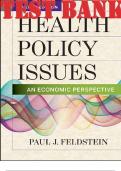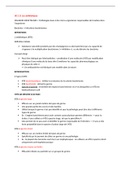Exam (elaborations)
TEST BANK for Health Policy Issues: An Economic Perspective 7th Edition by Paul Feldstein | Complete Chapters 1-38
TEST BANK for Health Policy Issues: An Economic Perspective 7th Edition by Paul Feldstein. ISBN 9781640550100, ISBN- _TABLE OF CONTENTS_ Chapter 1. The Rise of Medical Expenditures , Chapter 2. How Much Should We Spend on Medical Care?, Chapter 3. Do More Medical Expenditures Produce Better Health?...
[Show more]




